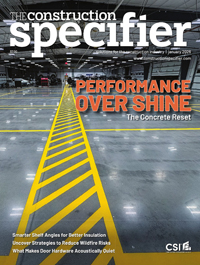Lighting requirements for high-rises proposed

Photo © Bigstock.com/KathyMcCallum
A proposal for lighting requirements for high-rise dwellings is in the works for an energy standard published by the American Society of Heating, Refrigeration, and Air-conditioning Engineers (ASHRAE) and the Illuminating Engineering Society (IES).
Currently, lighting in dwelling units in high-rises is exempt in both ANSI/ASHRAE/IES 90.1-2013, Energy Standard for Buildings Except Low-rise Residential Buildings and ANSI/ASHRAE/IES 90.2, Energy Standard for Low-rise Residential Buildings.
“In general, lighting within someone’s personal dwelling unit (home) has been exempt because it was not considered commercial, which is the focus of 90.1,” said Eric Richman, chair of the standard’s lighting subcommittee. “The International Energy Conservation Code with its residential component, and other similar state codes developed some basic requirements for dwelling unit lighting several years ago that addressed product efficacy. At the time, it was difficult to develop requirements that would ensure savings and still be practical for personal spaces. Over time, the lack of dwelling unit requirements in 90.1 presented a potential gap in energy savings. These new requirements would set efficacy minimums and/or controls for the lighting in dwelling unit spaced covered in the standard’s scope, which includes multi-family structures of four stories and above.”
The proposed requirements are similar to those in the U.S. Environmental Protection Agency’s (EPA’s) Energy Star program for high-efficacy lighting. They are simplified to apply to dwelling units in commercial buildings and to support compliance, as well as being conservative to allow design flexibility. They will effectively eliminate the use of incandescent/halogen sources, as well as less efficacious products in the compact fluorescent and light-emitting diode (LED) categories.



